Oslo is Totally Cool: Top 13 Things to Do in Oslo in 3 Days
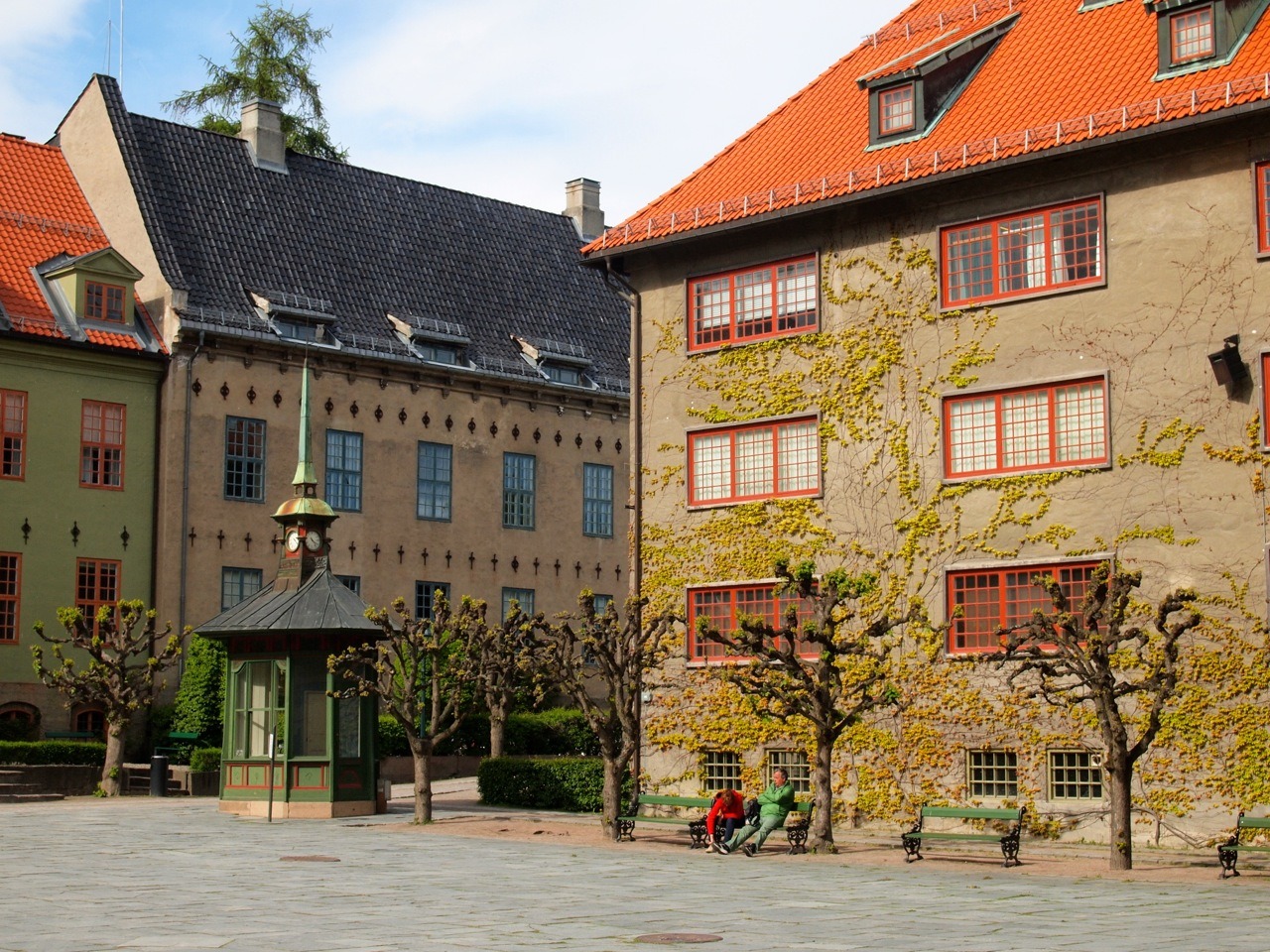
When most people talk about Norway, they talk about the fjords. The mountains. The train rides. The incredible scenery and natural beauty. (And I've talked about all those things, too!)
But you hardly hear anyone rave about Oslo, the Norwegian capital.
As an avid reader of other travel blogs, I can't remember reading very many posts about Oslo before my first trip there.
I assumed this was just because it was “just another” big European city; I assumed that maybe there weren't that many things to do in Oslo that really stood out, and that's why I hadn't heard much about the city.
But then I went there on my (first) 10-day trip around Norway and have since re-visited several times over the years.
And guess what? I discovered that Oslo is totally cool.
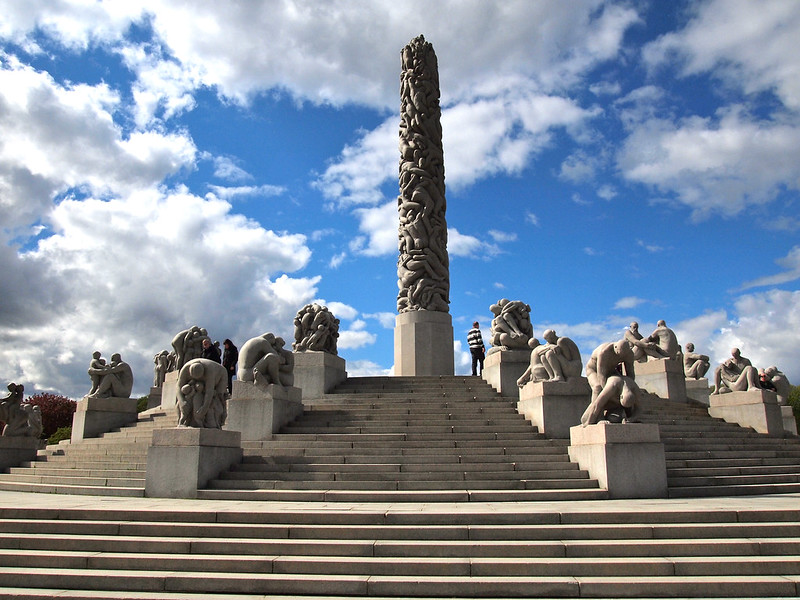
Oslo is clean and colorful and filled with green spaces. The people are friendly (even the palace guards will talk to you here!), and it has a fun mixture of both old and modern architecture. And it's not really even that huge; the population of Oslo is just over 700,000.
Oslo is definitely not just another cookie cutter city in Europe, and I don't think you should skip over it when you go to Norway. In fact, there are so many cool things to do in Oslo that I recommend spending at least a few days there!
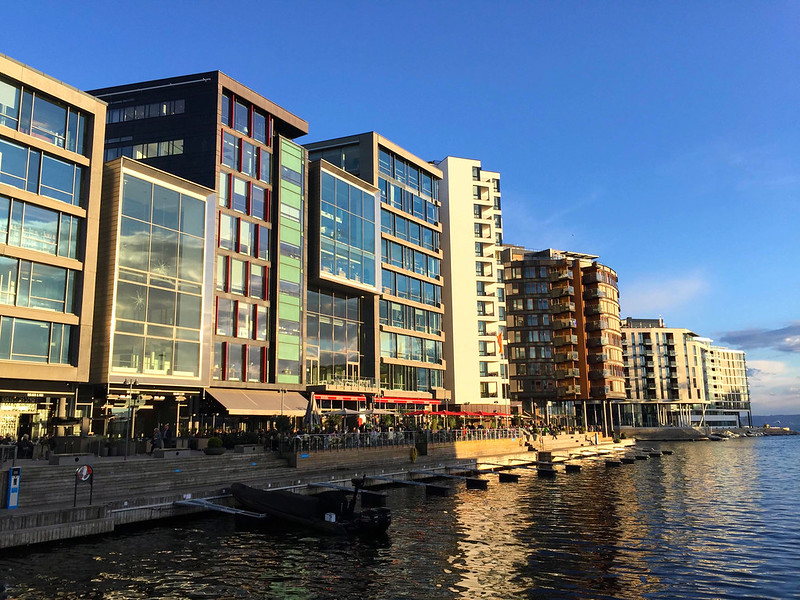
How many days should you spend in Oslo?
Most people will combine a visit to Oslo with other parts of Norway – maybe you'll take the Norway in a Nutshell tour to Bergen, or take the train up to Trondheim. Maybe you'll fly from Oslo up north to Tromso or the Lofoten Islands. Regardless, be sure to dedicate a few days just to Oslo.
I think 3 days is the perfect amount of time to spend in Oslo. You can see all the highlights in 2 days, but with 3 days you'll be able to take your time and soak in the museums, architecture, parks, cafes, waterfront, and more.
Get an Oslo Pass
Let's address the elephant in the room first: Oslo is an expensive city. Hotels are actually fairly affordable, but everything else – especially food and activities – is VERY pricey compared to what you're probably used to paying at home (unless you live in a Nordic country yourself).
The best way to save some money in Oslo without even trying is to get yourself an Oslo Pass. The Oslo Pass is a tourist pass that gets you free admission to 30 museums and sights, plus unlimited free public transportation on local tram, subway, bus or public ferry services.
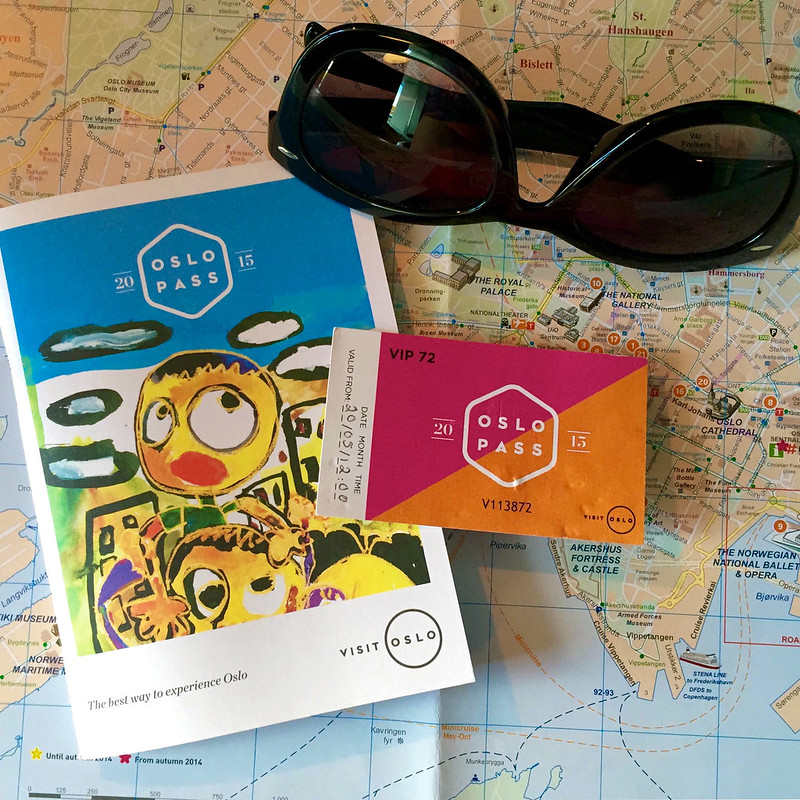
You can get an Oslo Pass for 24, 48, or 72 hours, prices are $46, $65, and $83 per pass. If you plan to do a lot of sightseeing in Norway and visit a couple different museums, then this is definitely worth it!
It's also super helpful to have public transport covered, as that cost can also add up (a single tram ride runs $3.60, for example).
You can buy an Oslo Pass at the Oslo Visitor Centre, or pre-purchase one in the Oslo Pass App. More info on the Oslo Pass here.
Top things to do in Oslo in 3 days
With 3 days in Oslo, you can tick off all the highlights – but you still won't be able to see it all. Here's a look at the top things to do in Oslo.
1. Walk along the Oslo waterfront
Cost: Free

Whenever I get to a new city, I like to do one thing first: WALK. Walking around a new city is the best way to get to know it, in my opinion, and walking along the trendy new waterfront in Oslo is a great way to see the old and modern being mixed together.
The waterfront area has been revamped in recent years, with a bunch of really modern buildings going up alongside some of the older ones. The Harbour Promenade allows you to walk for kilometers, seeing some of Oslo's top sights along the way.
There are lots of places to stop along the way for food or a drink, too, especially during the summer months when lots of pop-up bars and eateries roll out along the water. (Sukkerbiten has a great outdoor space with bars and food trucks.)

Also be sure to stroll through Aker Brygge, a pier area that's filled with bars and restaurants. It's a very lively and pretty part of the waterfront.

2. Climb the Oslo Opera House
Cost: Free
Located on the waterfront not far from Oslo's central train station, the Oslo Opera House is home to the Norwegian National Opera and Ballet – and it's worth visiting even if you won't be seeing a show.
Built between 2003 and 2007, the Oslo Opera House is meant to resemble a glacier in Norway's harbor. Its design has won architecture awards, and visitors are encouraged to not only visit the interior, but to also climb the exterior for excellent views of Oslo.


This is a great spot for people watching, and there's even a small local beach (Operastranda) right next to the Opera House that locals use all summer long.

3. Book a seaside sauna
While nearby Finland is really the king of saunas, Norwegians also embrace sauna culture – especially when paired with a dip in a fjord!
All over Oslo, you'll see little floating sauna rooms. These urban saunas can be booked in advance for a private steam, and all have ladders to help you cool off in the fjord. Locals and tourists alike use these saunas along the harbour promenade; there are about 5 different spots to enjoy them.

(There's also an easy spot for fjord bathing called Sørenga Sjøbad if you want to skip the sauna part and just get in the water!)
4. Visit Akershus Fortress
Cost: 100 NOK, or free with Oslo Pass
A lot of Oslo looks and feels new, but the Akershus Fortress and Castle definitely represents the old in the city. Akershus dates back to the 1290s, when it was originally built as a royal palace.
The fortress/castle was besieged several times throughout its history, but interestingly was never taken in battle – but it WAS surrendered to Nazi Germany in 1940, and was occupied by them until 1945.
Today, Akershus is still used by the Norwegian military, but is also open to visitors. You can visit both the Norwegian Armed Forces Museum and Norway's Resistance Museum here, as well as tour the castle.
(And if the fortress looks oddly familiar to any Disney fans, part of it is replicated in the Norway pavilion in Disney World' Epcot!)
5. Stop in to City Hall
Cost: Free
Oslo's City Hall doesn't look all that special from outside, but inside it's covered in murals and a beautiful marble floor sourced entirely from within Norway.
There are guided tours offered during the summer, but you can also just pop in to see it on your own.
6. Stroll Karl Johans Gate
Cost: Free
Also on your walking tour of Oslo, you can hit up Karl Johans Gate, the main street in the center of Oslo that leads from the train station to the Royal Palace. Closer to the train station, there are lots of shopping options interspersed between pubs and cafes.
Closer to the Royal Palace, the street is colorful and partially tree-lined, and is a great place to sit down and sip on a cup of coffee.


7. See the Royal Palace
Cost: Free (guided tours are 175 NOK)
Norway still has a functioning monarchy that calls the Royal Palace home, so tours are only offered to the public for a couple months in the summer. (Info on tours is here.)
But you can still walk right up to the palace on your own, stroll through the surrounding park and gardens, and stop for a photo – or even a chat! – with one of the royal guards. I was pretty excited to see so many female guards guarding the palace, too!

8. Visit a museum on Bygdøy
Cost: Varies, but most of these museums are free with an Oslo Pass!
Oslo has a TON of cool museums – we're talking really unique museums that you won't find anywhere else in the world. And several of these museums are located close to one another on an peninsula called Bygdøy that you can reach via boat from central Oslo.
Some of the museum you can visit on Bygdøy include:
- The Fram Museum, which celebrates Norwegian polar exploration and houses the polar ship Fram.
- The Kon-Tiki Museum, focusing on the expeditions of world-renowned scientist and explorer Thor Heyerdahl.
- Norwegian Maritime Museum, which is exactly what it sounds like.
- The Viking Ship Museum*, which houses the remains of Viking burial ships that are more than 1,000 years old.
- Norwegian Museum of Cultural History (Norwegian Folk Museum), which is an open-air museum showing life and culture of Norway. The famous stave church is here.
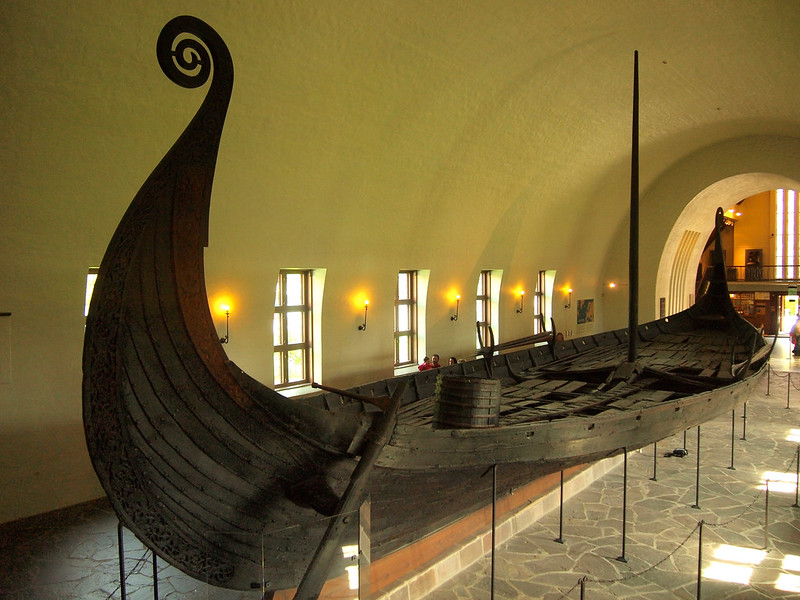
*Note that the Viking Ship Museum is being completely reimagined/rebuilt, and will not re-open until 2025 at the earliest.
9. Visit another Oslo museum
Cost: Varies, but most of these museums are free with an Oslo Pass!
And that's not it when it comes to museums in Oslo! Some others you might be interested in include:
- The Munch Museum, dedicated to expressionist painter Edvard Munch (famous for his “The Scream” painting).
- The National Museum, which is a brand new museum covering Norwegian art, craft, and design.
- The Nobel Peace Center, because the Nobel Peace Prizes are awarded in Oslo each year (currently closed as of June 2023, though).
- Museum of Oslo, city museum located in Frogner Park.
- Natural History Museum, which is the largest natural history museum in Norway.
- Oslo Transport Museum, which has a large collection of vintage trams and buses.
- The Holmenkollen Ski Museum, located inside Oslo's huge ski jump, which presents more than 4,000 years of skiing history.

10. Check out Frogner Park / The Vigeland Park
Cost: Free
I mentioned before that Oslo has a ton of green spaces, and one of my favorites is Frogner Park, which is often called Vigeland Park by non-locals. Frogner Park began as a manor estate in the 1750s, and the Vigeland Park part came in in the 1930/40s, when artist Gustav Vigeland designed more than 200 granite and bronze statues to install in the park.
The Vigeland installation alone covers 80 acres, and consists of groupings of statues of naked humans doing (mostly) normal things like running, dancing, hugging, etc. The sculpture park is the world's largest made by a single artist, and truly is impressive.

There's a bridge, large fountain, and monolith all designed by Vigeland, and you can easily spend a couple hours here seeing all the statues.


The is one of Oslo's top attractions, and locals use it a lot, too. On a sunny weekend day, the park is filled with Norwegians walking, playing, and picnicking.
11. Explore another neighborhood
You'll probably be spending most of your time in central Oslo and along the waterfront, but if you want to explore another neighborhood, make it the hipster Vulkan neighborhood in Grünerløkka. This part of Oslo is artsy and sustainable, with eco-friendly architecture just north of the city center.
There's even a street food tour you can take in this part of Oslo.
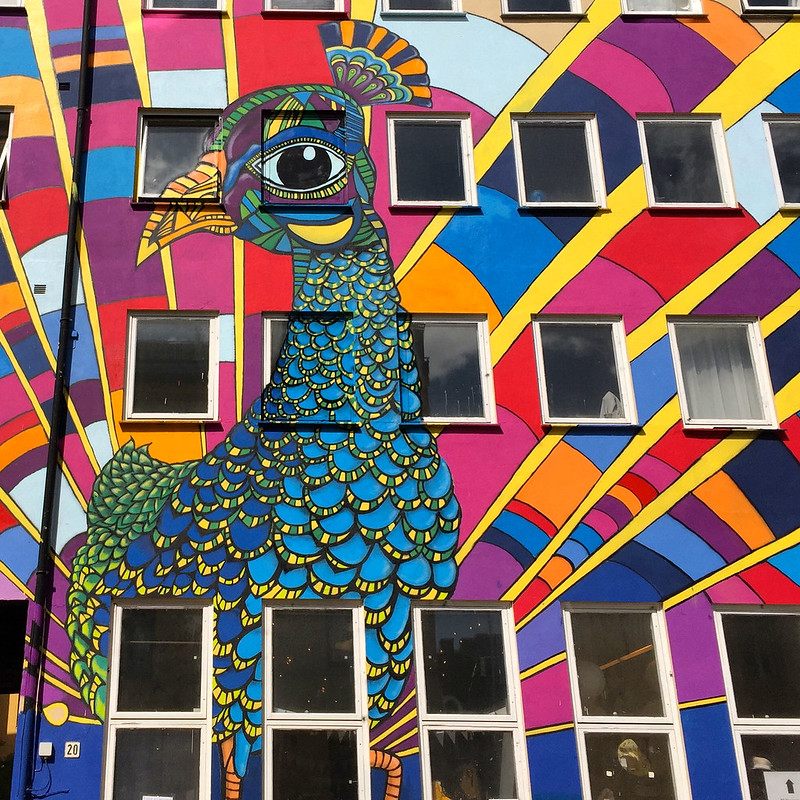
12. Eat at a food hall
I mentioned before that food is VERY expensive in Oslo. We're talking main courses averaging $30 per person or more in a restaurant; you can very easily spend $100 on a meal for 2 without even trying.
If you want to save a bit of money AND try something fun, check out one of the food halls dotted around Oslo. Inside these trendy spots you'll find a variety of quick-service food stalls and usually some cool seating options.
Just a few I know of that I've tried include:
- Barcode Street Food near the Opera House
- Oslo Street Food in central Oslo
- Vippa on the waterfront between Akershus and the Opera House
- VIA Village Food Court near Aker Brygge
- Mathallen in Vulkan

13. Go on a fjord cruise
Let me preface this my saying that there are much better options for exploring Norway's fjords than from Oslo. So if you're heading further north in Norway, I would skip this one.
BUT, if you're only Oslo on a city break, then by all means book a cruise to get out on the water and get a little taste of the fjords. Oslo actually sits at the end of a fjord (the Oslo fjord), and several companies offer sightseeing cruises out into it. This 2-hour fjord cruise takes place on an authentic sailing ship.
Where to stay in Oslo
I've been to Oslo a few times now, and have enjoyed staying both in the city center, and in the Vulkan neighborhood.
My top hotel picks include:
- Thon Hotel Opera, which is between Oslo's central train station and the Opera House.
- Thon Hotel Terminus, which is close to Oslo's central train station (where the airport train arrives, and where trips like Norway in a Nutshell depart from).
- Scandic Vulkan in Oslo's hipster Vulkan neighborhood.

How to get around in Oslo
- On foot – A lot of things in Oslo can be reached on foot within the city center.
- Public transit – Oslo has trams, buses, and a metro. You can download the Ruter app to purchase tickets on your smartphone, or you can pay with a contactless method when you get on a tram or bus.
- Bike share/scooters – Oslo City Bikes and electric scooters are both available for quick trips around the city.
- Taxi/ride share – Uber operates in Oslo, and you can also try the MiVai app, which allows you to order a taxi based on the lowest rates available.
So what do you think of Oslo now? Have I sold you on the Norwegian capital?
Pin it for later:
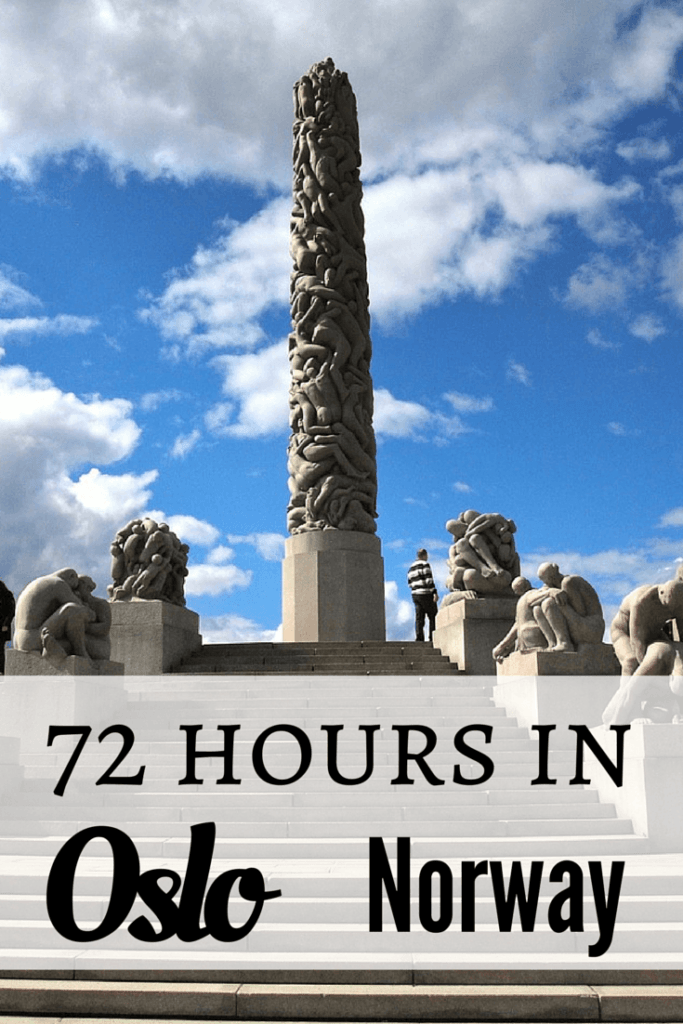

Amanda Williams is the award-winning blogger behind A Dangerous Business Travel Blog. She has traveled to more than 60 countries on 6 continents from her home base in Ohio, specializing in experiential and thoughtful travel through the US, Europe, and rest of the world. Amanda only shares tips based on her personal experiences and places she's actually traveled!

















I love the idea of visiting Oslo but it sounds like i must set aside a very healthy budget for the travel, especially for the cost of food and meals. I now have a 11 year old boy who can eat a lot.
Norway is quite a pricey destination! Maybe you could consider staying in an apartment or other self-catering option so you could prepare some meals for yourself. Groceries are much more affordable in Norway than eating out for every meal!
I haven’t been to Norway since 1968 when I rode over on a motor scooter from Sweden on a 5 month tour of Europe in my youth! The entrance to the city of Oslo at night was one beautiful sight that I have never forgetter! I remember having three fish dinners in a matter of 24 hr & I don’t even like fish but it was so delicious that I kept going back… to the Goldfisken, wonder if it could stilll be there? I visited all of the places on your list & enjoyed the pictures you posted so much! You’ve awakened my desire to return! Thank you, Amanda! ( ps, I am also a small town Ohio girl!)
So glad that I could bring back some great memories of Oslo for you!
Oslo looks absolutely fantastic. From the Norsk Folkemuseum to the \Vigeland Park the city looks absolutely amazing. My one question about Oslo is what are the local “Street Foods” that people typically eat? Is it herring in white sauce or what other items do they enjoy?
Honestly I don’t remember seeing any street food there! Restaurants, yes, but not really street food. (Though I’ll try to pay more attention during my next trip.)
I noticed these posts are over a year old. I feel I must add however: I am of Nordic descent, albeit Swedish rather than Norse. I did attend and graduate from a Norwegian founded school in the U.S., St.Olaf College in Minnesota. I know there some ethnic differences, but to me, Scandinavian is any of three/four ethnicities: Denmark, Sweden, Norway and Finland. Back in MN a “mixed” marriage is a Swede marrying a person of Norwegian descent. BTW, they’re all Lutheran. Ultimately, we all live peacefully!
Yes these posts are from 2015, but that doesn’t mean Oslo is any less cool! 😉
Oslo is a beautiful city. Thinking about visiting Norway in May.
[…] https://www.dangerous-business.com/2015/06/72-hours-in-oslo-norway/ […]
Dear Amanda. I’ll be happy to be your guide if you ever come back to my hometown. It’s not that Oslo is a bad city to live in. I have a sailboat and enjoy the mellow Oslofjord a lot every summer and since I’m living at the edge of the immense forests (15 min from city senter) I go skiing in the winter and hiking in the summer. As a tourist, go to the Tourist information and get a walking map and treat yourself to a pleasant 3-hour walk from Tryvannstårnet (The tower of Tryvann), down to Ullevoldsseter and finish the walking trip with a swim in Songsvann before you take the tube downtown again. And yes, I have been twice to the States (Bought a car at a gas station and drove for 3 months in the US, 1 month in Canada and 1 month in Mexico), I’v been 3 times to Japan. Went by local train last year from Bangkok, to Kuala-Lumpur, Georgtown and Singapore. This year I traveled 1 month in Australia and stayed 14 days in Vietnam) Been all over Europe… The list is quite extensive… In other words I have been to many cities and countries that both has worse slums, transportation, pollution, poverty and drug abuse than we see in Oslo. But then again…. Norway and Oslo is filthy rich… we have so much money that our rulers have to invest them in American junk bonds. We should be able to do SO MUCH BETTER with all the money. Fast trains like Japan, excellent undergrounds like in Singapore, modern schools, clean cities. The list is long… But be welcome Oslo is well worth a visit… Now autumn and winter is closing in and 6 months of cold and darkness with 3 hours of sun comes 21 December 😉
Compared with Rome, ( Rome was the last main city I visited ) is Oslo in fact quite cheap to eat , shop and live in 🙂 And easier to shop in than Rome, Paris and London. Oslo have a lot of quite large shopping centers, and easy to get to. Forexample in Rome there is really difficult to get to a shopping center without using taxi who is very expencive since its a long way from centre of Rome. We used the train and bus , but it was difficult to find and not a pleasent part of Rome. In the shoppingcenters in Oslo you will find both cheap and expencive shops. For al pocket`s 🙂 And there is a lot of shoppingcenters easy reachable with train or bus. Also some in the middle centrum. And two quite long shopping streets. You have a lot of different restaurants where you get meals from about 9-10 pounds and up. Also there is good grocerystores everywhere, where you can buy food if you want to make your own lunch or breakfast. And living , there is hotels in al price classes. You get a room in a hotel or B&B for two persons from about 9 pounds, cheaper if you take a hostel. So I think that Norway and Oslo has got a undeserved bad reputation about how expencive it is.
Well, I certainly wouldn’t call Oslo cheap, but it certainly doesn’t *have* to be as expensive as many people assume it is!
A gem – Emanuel Vigelands mausoleum is a tall, spaceous room, sparcely lit with frescos covering the walls.
http://www.emanuelvigeland.museum.no/museum.htm
I like the write up, but if you go to Oslo again.. try to do Island hopping in the fjord with the Public transportation pass and head up in the forest on the same day. You can sit an view the Islands you went on earlier the day. Not many capitals you can do Island hopping in.
Great tip! And I’m sure that would be awesome to do on a summer day!
Such a nice blog about my favourite city. I moved to Oslo 30 years ago and have lived here ever since. The Great thing about my City is the combination of nature (lakes / fjord /forrest / mountains /beaches), shopping and a nightlife with restaurants and cafees, sites, culture. All within half an hour! In your review you forgot about the Ekeberg sculpture park. Free enter/Open all days. It was one out of Five suggested parks to ever visit, by New York post! (if I remember correctly. One of US big newspapers)
Yes unfortunately I ran out of time to get to Ekeberg! But I’ve heard it’s great.
Great photos. I’ve never really considered Scandinavia but with TBEX in Stockholm next year and just having visited the Baltics, I’m definitely thinking about it more.
It’s definitely worth considering! (Though, Scandinavia is way more expensive than the Baltics! Haha.) I think TBEX will give a lot of people a good excuse to go, though. Which is a good thing – it’s a part of the world so many people dream of visiting!
Wow, Oslo looks like a very unique city! I was surprised when you mentioned that very few travel bloggers are posting about Oslo– from what you’ve described here, the city definitely seems like it has a great sense of culture. You have definitely sold me on Oslo!
I mean, it’s possible I’m just reading the wrong blogs! Haha. But, on the whole, I feel like a lot of bloggers skip Scandinavia because of the cost, and when they do visit Norway, they tend to go for places like Bergen that are closer to the famous fjords. Which is a shame – because Oslo really IS cool!
Im going to Oslo in October and this post just made me even more excited!!
Yay, glad to hear it!
[…] If you’ve ever considered a trip to Norway (or maybe if you’re reading this post because you’re currently planning a trip there), chances are you’ve already had people tell you that you have to go to the fjords. You may have had people recommend Tromso in the north, or wax poetic about Bergen in the south. They may have even told you not to skip Oslo. […]
Hi Amanda, thank you for a very nice review of Oslo!
One of the Norwegian favourite pastimes is hiking (gå på tur) and any city will have some nearby forest or mountain with marked trails in summer and freshly prepared ski tracks in winter. When it comes to saving money, it so happens that you can camp for free in these areas.
In Oslo you can take the metro into the immense woods ( a 20min trip from the city centre) and pitch your tent just about anywhere and why not do so in front of your own personal lake in order to go for a swim in the morning before taking the metro into the city?
A by many overlooked event in Oslo is the Ski Fest in March at Holmenkollen. This might not sound terribly interesting to someone not into crosscountry skiing and ski jumping, but it is great fun and a mere 5000 people stay in the woods around Holmenkollen for a whole weekend sleeping in tents pitched in the snow and some partying is admittedly done at night. I was going to say that it is worth it, but then the Ski Fest is free, as well as the outdoor camping.
Yes, you would have to be a little bit sporty I guess. But it would not be your average city break either.
Very good to know, Marie! Thanks for the tips!
I’ve been to Oslo a few times, in summer and winter, and i think that is really an expensive city, but if you look well managed decent prices to eat …
Advise a visit to the North, i was in Geilo and Voss … the landscapes are just as we see in the postals cards … breathless …
It’s certainly not a cheap city, but then again nowhere in Norway is! Still worth visiting though, if you ask me!
I like your posted photos very much. For a while I go back to 1985 & 1990. We were going arroun Oslo.
Have a nice time
Love
Mahbub
Very nice blogpost about new home Oslo! Beautiful photographs! 🙂
Thanks very much, Isabelle!
love to se people enjoy my fave city! (im norwegian) tho im a country girl at heart i love to go for day trips in to oslo just to look at it all or to go shopping. i lived there for a year, and totally miss it! but oslo is not a super dog friendly town (to live in) so i packed my bags & moved back home so that my furry kids cant play outside more. hoping to get some good oslo time in over the summer tho! paradIS ice cream shop at the far end of akerbrygge is the best! all home made and super yummy!
It’s a very cool city – I can understand why it’s your favorite! (Though, I’m with you – I love visiting cities, but it’s the smaller towns that almost always win my heart.)
I have extensively traveled through Sweden in my life, and briefly through Denmark and Finland. I have always sort of avoided Norway just because, as you mentioned, the high prices of everything. However, you have sold me! I guess I just needed someone to tell me that it can be affordable. I’m a big mountain fan, and their mountains I’ve heard are the stuff of dreams. Not to mention, my town in small town Iowa is in fact, Norwegian, so it would give me big points with the locals 😉 Thanks for the great post/inspiration!
Norway is absolutely worth it! I loved it (even in the rain!).
I think one of the hottest tips for the cheapest possible Norway holiday (outside Oslo), would be to travel with a tent/backpack.
During the summer, this will be a very nice way to travel, because, as long as you are not tenting in someone’s back-yard, you can put your tent up anywhere you like.
– I suppose this fit the outdoor-people more than your average traveler though =)
We see a lot of German and other European tourists, crisscrossing the country in the summer with caravans and mobile-home cars(?).
They live and prepare food in their vans/caravans and rest at assigned camping-areas (with toilet/shower/washing facilities).
Some even bring their own food, although, the absolute cheapest food you can get, is in the regular grocery stores (Rimi, Rema, Ica, Kiwi etc).
There are cheaper hostel types of places one can stay. If you are a gang, there are various opportunities to rent a lodge for several days. Then you split the fee and cook your own food.
Cool to see someone doing a write-up on Oslo.
Tip: If you are bored (and the weather is good), take the subway to Sognsvann, when you walk off the platform, you have basically miles upon miles of forest to the north (the further you go, the fewer people you will see). ^^
Or when you are out at the Viking-ship museum, and if the weather is nice (IF!), take the bus 2-3 stops further, to the end-stop and try and have a dip in the ocean at “Huk” beach. 🙂
– No sharks here! =D
All great tips Ole. Thanks!
Have you sold you me on the Norwegian capital? You sure have?
It looks amazing. And yes every Nordic country isn’t budget-oriented but they’re so worth the cost.
I went to Finland in the Spring and it was expensive. That’s just the way it is. I knew this already and just sucked it in, went to the food market and ate sushi every day!
I’m going to Sweden sometime this year and it’ll be the same. Spend the money and enjoy the experience!
Yes, I totally agree that, despite the expense, Scandinavia is totally worth it! Hope you make it to Oslo sometime!
She has sold me too! I just returned from Sweden, the value of the krona to the dollar right now is phenomenal-the lowest I have ever seen it. Hopefully it will stay that way for your trip! I don’t know if you’ve been there before, but it is my favorite place in the whole world. Try to venture down to the southern country side and bluffs if you have a chance 🙂
For a good cup of coffee or to enjoy people-watching check out these cafee’s:
Liebling: http://www.liebling.no/
St.Pauli Biergarten: https://www.facebook.com/stpaulibiergarten (part of Liebling)
Pauls Boutique: https://www.facebook.com/PaulsBoutiqueOslo
Hva skjer: http://www.hvaskjertorshov.no/
Fuglen: http://www.fuglen.no/
Tim Wendelboe: https://timwendelboe.no/
The Kasbah: http://www.thekasbah.no
Literaturhuset Cafe: http://www.kafeoslo.no/
Thanks for the suggestions, Julie!
Great, informative post!! Reminded me of last year when I spent six months in Oslo and it soon became my favorite city ever. The proximity to nature is a definite plus that you don’t see in many capital cities. My absolute favorites were island hopping and going to Sognsvann (huge lake surrounded by forest). It’s a truly magical city!
You’re right about it being expensive! The grønland area was the most affordable place to eat out, but then again, it’s not Norwegian food. If you are in a tight budget then it would be best to stay somewhere with a kitchen and cook your own meals.
Again, great post and love your blog btw!
Oslo was the first major city in Scandinavia that I’ve visited, and it definitely impressed me!
Great post I never hear before about oslo but it sounds like is a cool place to go
It is very cool, Izy!
I hadn’t heard much about Oslo either apart from people telling me it was boring and to visit Bergen instead. It definitely looks like a beautiful city and you have convinced me to visit when I get to Norway in a couple of years
Everyone always seems to have mad love for Bergen, but there are SO many other cool places in Norway! (In fact, I purposely didn’t go to Bergen on my trip because I wanted to see something different than what most other people see when they go to Norway.)
Thank you for writing about a diffrent part of Norway then most! I like have you think, its nice to see something of a surprise when traveling! And I love to read how someone who visit Oslo is talking about the city. Its allways nice to see what you have close by with new eys, makes you want to explore your own backyard more. I grew up outside the city, but close to it. At the moment located 40 min train ride/30 min car ride away in a smaler city.
But if you go back, Bergen is a nice city because of how it is located, even for us Norwegians. I will recomand you to take the train into the city if you do go. But Oslo also how the easy access to nature sourounding the city aswell.
South in summer time, nice coast villiages. Lofoten has the beaches without people and fish villages, northern light in the north.Fjords are mentioned for a reason. And one of the things I love the most the lakes in the forrests to swim in on hot summer days. Water is clean, its abondent with space/few people compared to many places and the woods smells so good. It feels private and free. Not everyone likes that tho! I guess you have that in Ohio aswell?
Its been cold here in may and june this year. But when summer hits like this last week it can get realy hot. the north had 40 c and we in the east have had 27 c. Thats the charm and the “annoying” thing with Norway when it comes to planning, you never know what you get! I hope you get to experiance the light and warm summer nights tho! Its what I allways get amazed by specialy after I have spent a summer in an other country, the winter passes and then it gets so light..and then to sit outside when its warm. I grew up in Norway and love the beauty and varity of the country.
Obs, my mistake, I see you have already been around a lot of the country 🙂
Great writings! 🙂
I sadly didn’t get to experience any of those warm summer nights while I was in Norway, but I still really loved the country!
Oh, Oslo is in many ways a nice city to live in. but as a tourist you don’t see the dark side of what we natives call “The biggest village in Europe”. The litter, the lack of a decent public transportation system. Biking in our capital is probably one of the most dangerous thing you can do. The city is a pollution trap and in the winter the air is yellow green because 30 000 cars are pouring in and out of the center of the city. Then we have a rampant use of drug abuse. Just try the Riverwalk (and rent a personal life-guard before you do.). However, the city is pretty safe and the bright, sunny summer evenings are fantastic.
I’m sure that even cities in Norway have their “dark sides,” Robert. Most larger cities do. However, I’d invite you to come visit larger cities in the US (where we have millions of cars and far poorer public transport) to realize just how good Oslo has it! 😉
I grew up in Oslo and now live in Sydney, and I think you just lack perspective. I used to complain about the public transport system in Oslo, but I think we are so spoiled that we’re annoyed as soon as the bus is 5 minutes late. When I got to Sydney I was shocked at how poor their public transport system is and will never ever again complain about Oslo’s! Also the drug abuse is not nearly as widespread as in Sydney where you see people overdose in clubs regularly and taking stuff like MDMA and coke is seen as completely normal. Sure you will see heavy drug users around the central area in Oslo just as you would in any other big city, but the drug abuse problem really could have been much worse, trust me!
It’s true about biking though, I hope Oslo can learn a thing or two from Copenhagen to make biking safer!
Robert you really should travel more. You´d realize you don´t have anything to complain about 😉
I feel the need to correct Robert on his comments there… Oslo has one of the, if not THE best, public transportation coverages, worldwide. The metro network is fairly extensive, and there are also several tram lines as well as buses criss crossing the city. The paths along the Aker river, which Robert refers to as the River Walk, is not at all that dangerous anymore. It’s well lit, there are more and more restaurants and pubs along its length that provide safety and activity, and the police have managed to scare away most of the more seedy elements. The biking part I agree with, mostly, but it’s not like it will kill you to ride a bike. Just choose the right streets and parks/green spaces and you’ll be fine. Pollution can be pretty bad in winter, but from what Robert writes it sounds like Beijing or Mexico City, and that is certainly not the case.
Try riding a bike in Amsterdam. I agree with Ole…just came back from Oslo, did the river walk and enjoyed it a lot. My AirBNB hosts were a bit shocked too when I told them, but honestly on a sunny afternoon there is nothing to worry about.
And while you’re in Oslo don’t forget to visit Ekebergparken on a sunday and enlist (online in advance) for a visit to James Thurells’ skyspace. It is truly a special experience!
Walking is my first thing to do also! The waterfront is where I would head to…was it pretty long? Even if it’s dark, cold waters, it’s so calming to look at.
The waterfront area is pretty large. They’re still working on the official promenade, which I think will eventually be about 9 kilometers long!
Whenever I see pictures of Oslo, it’s always the photo of the Opera house which looks extremely modern and I’m not really a big fan of modern cities. Your post made me realize though that there is more to Oslo than the Opera house. That main street is lovely!!!
Yup, there’s lots of modern architecture around the Opera House, but there’s definitely more than just that in Oslo!
Ah, I felt the same as you, but then I discovered a fascinating side to Oslo in its industrial past – the area around the Akerselva river is full of greenery and history! I’ve written about it in the post below 🙂
Looks like you had nice weather and mostly blue skies here. 🙂
Haha, well, the photos are a little misleading – it rained both days I was there, but thankfully the rain didn’t last all day!
I just wrote about Oslo a week or two ago! I was there over Easter, when the city practically shuts down, and STILL had a good time! I didn’t get to go in City Hall, though. Those murals look amazing!
http://www.ferretingoutthefun.com/2015/06/04/72-hours-in-oslo/
I probably never would have gone into City Hall, but I was walking around with a local guide and he assured me it was worth it – and it was!
Excellent article, Amanda! My wife and I spent four days in Oslo in May and thought the same as you did about the city. We even hit almost all the same places, including the ski jump and Mathallen Food Hall, which aren’t on everybody’s list. We didn’t think that there was enough to do in the city to keep us occupied for that long, but we were wrong. You’re totally correct about Oslo (and Norway in general) being very expensive. Lodging isn’t too bad, but food is very expensive. I suggest hitting ethnic restaurants (Indian, Thai, Middle Eastern) to cut down on your food bill.
Yeah, I didn’t know if I’d be able to fill 2 full days in Oslo before I went, but then I discovered there’s so much cool stuff to see/do! I didn’t get to all the museums or parks I wanted to visit, so I’ll definitely have to go back!
It does look very cool!
Totally cool! I really didn’t know what to expect before I went, so I was really impressed! (Then again, it’s Scandinavia… not sure why I was expecting anything less than awesome!)
Did you know that the room in city hall that you visited is where they have the Nobel peace price ceremony? All other peace prizes are celebrated at the Stockholm City Hall. #TheMoreYouKnow 🙂
Yup, I did learn that! One more thing that makes Oslo totally cool. 🙂
The peace prize is handed out in Oslo. Stockholm have the prizes in Chemistry, Literature, Physics, and Physiology or Medicine.
I agree, Oslo looks totally cool! I’d definitely like to soak up its city buzz and stunning attractions.
Yeah it’s definitely a city I’d spend more time in!
I was only in Oslo less than 24 hours since my flight was delayed, but from what I experienced, I couldn’t help but think it was a super palatable city (and I imagine it would be much better to visit in summer rather than when I was there in winter)!
Yeah it was a lot cooler than I expected it to be! I actually found myself wishing I’d had more time there, because I didn’t get to see everything I wanted to (though, I did lose nearly half a day to jetlag, which didn’t help either!).